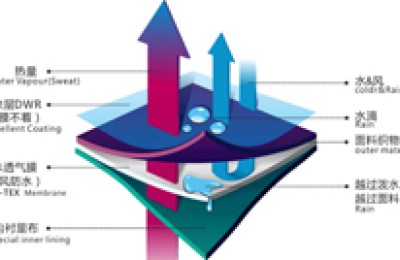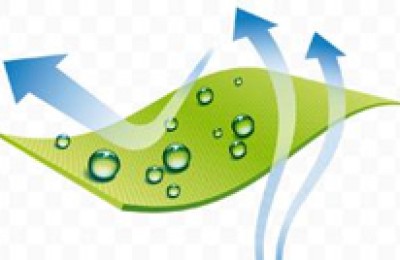Export overview
Facing complex international situations such as the slow recovery of the U.S. economy, the spreading European debt crisis, and the continued depreciation of the yen, enterprises in Hai’an County, Jiangsu Province responded proactively, and textile exports achieved growth against the trend. According to statistics from the Haian Office of the Nantong Inspection and Quarantine Bureau, in the first half of this year, Hai’an County, Jiangsu Province exported a total of 5,448 batches of textiles (this article refers to colored fabrics), 73.5957 million meters, and a value of 166.2756 million US dollars, an increase of 29.31% and 21.51% respectively compared with the same period last year. % and 19.73%; mainly sold to 68 countries and regions in Asia, Europe, America, South Africa, Egypt, Canada, etc. Among them, textiles exported to South Asia, Southeast Asia and East Asia accounted for 45.68%, 36.77% and 8.73% of the total trade volume respectively; Export varieties include cotton, polyester-cotton, linen-cotton yarn-dyed fabrics and printed and dyed fabrics. Among them, cotton-dyed fabrics account for approximately 74.99% of the entire trade volume.
Existing problems
Haian County is one of the main textile export producing areas in Jiangsu Province. The overall quality of textiles is in good condition, but the quality of yarn-dyed fabrics has declined recently. In the first half of this year, the Hai’an Office of the Nantong Inspection and Quarantine Bureau randomly inspected 342 batches of export textiles, and found 20 batches unqualified. The unqualified rate in one sampling inspection was 5.85%. The quantity involved was 291,700 meters, and the value of the goods was US$512,100. The unqualified items include (longitude and weft direction) density deviation rate, (longitude and weft direction) water washing dimensional change rate, (longitude and weft direction) breaking strength and color fastness. Among them, the warp direction washing dimensional change rate and weft direction breaking strength are unqualified batches They accounted for 40.00% and 35.00% of the entire unqualified batch respectively, ranking in the top two.
Cause
With the influence of many factors such as rising domestic labor costs, appreciation of the RMB, high prices of production factors, especially the inversion of cotton prices at home and abroad, Haian’s price competitiveness in exporting textiles has gradually lost, and corporate profit margins have become increasingly narrower. Businesses are even struggling to stay afloat. In order to survive and develop in adversity, some companies put more emphasis on profits than on quality, resulting in frequent product quality problems. Some of the unqualified items in the sampling inspection are due to production companies cutting corners and using poor quality yarns and dyes in order to save production costs, or improperly controlling pre-treatment, dyeing, shaping, tentering and other processes, and not producing according to the process flow; some This is due to the fact that in order to promote trade when the international economy is weak, foreign trade companies and foreign businessmen have reached a certain tacit understanding and entered into sales contracts for cheap and low-quality textiles.
Hazard analysis
The warp and weft density of textiles refers to the number of warp or weft yarns arranged per unit length of the textile along the warp and weft directions. Unqualified density will affect the fastness, feel, breathability, cost, etc. of the textile. ; The washing dimensional change rate of textiles refers to the percentage of shrinkage of textiles after washing or entering water. Its failure will affect the processing and use functions of the products; the breaking strength of textiles refers to the complete breakage of the warp or weft yarns of textiles The strength at the time, its failure will affect the durability and service life of the product; color fastness refers to the resistance of the color of the textile to various effects during processing and use, mainly including resistance to washing, resistance to dry rubbing, resistance to light , water resistance, sweat resistance, heat pressure resistance and other color fastnesses. Unqualified color fastness will not only affect the appearance of the product, but the shed dye may also be absorbed by the human body through sweat, etc., causing allergies, poisoning, and affecting the health of the user.
Countermeasures
In order for foreign trade enterprises to remain invincible in international trade competition and to maintain the good quality reputation of my country’s textiles in the international market, relevant parties should take the following countermeasures:
1. Foreign trade companies should carefully choose high-quality and honest trading partners. Externally, we select high-quality customers and sign textile contracts with high quality and high added value. At the same time, we actively explore emerging markets and expand export channels. Internally, we select honest and reliable production companies and organize production in strict accordance with the relevant regulations of the country where the textiles are exported.
2. Manufacturing enterprises should control the quality of raw materials. When purchasing, try to choose raw material suppliers with good integrity and better management. The raw materials will be tested before the products are put into production, and the raw materials will be qualified and produced in strict accordance with the processing technology requirements.
3. Relevant departments should continue to actively promote the upgrading of the industrial structure, increase independent innovation, further optimize the export structure of textiles (including product grade, added value and market structure, etc.), enter the high-end retail market, and seize the right to speak in the international market. , enhance the ability to resist risks.
4. Inspection and quarantine agencies should continue to give full play to their own advantages, collect foreign textile technical standards and relevant legislative information, and provide early warnings to relevant enterprises at any time; strengthen the publicity and implementation of relevant standards, and improve the quality awareness of production and operating enterprises and production quality management level, to help companies improve product quality; continue to implement preferential measures such as classified management, direct release, green channels, and inspection and communication service platforms to help companies reduce export costs and increase release speed.
(Author’s unit: Nantong Entry-Exit Inspection and Quarantine Bureau)




